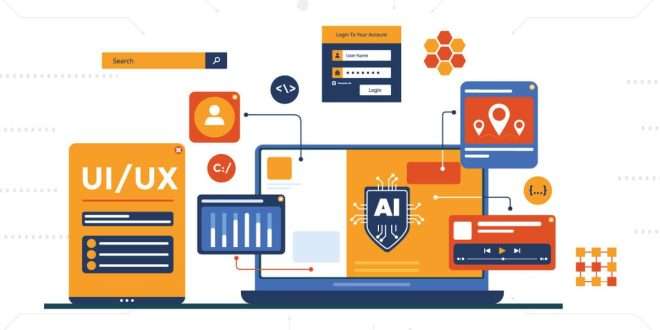As the digital landscape expands, developers face the challenging task of ensuring their websites and applications function flawlessly across various browsers and devices. Cross-browser compatibility issues can lead to a poor user experience, lost traffic, and reduced conversions. To tackle this problem efficiently, developers are turning to AI-powered cross-browser compatibility testing tools. In this blog, we will explore the power of these tools, how they can streamline the testing process, and the benefits they offer to developers.
Understanding Cross-Browser Testing
Cross-browser testing is the process of evaluating how a website or application behaves across different web browsers and versions. With a multitude of browsers available today, such as Chrome, Firefox, Safari, Edge, and more, each with their unique rendering engines, it becomes crucial to ensure that your web application looks and functions consistently across all platforms.
The Challenges of Traditional Cross-Browser Testing
Traditional cross-browser testing methods involve manually testing each browser and version, which can be time-consuming, labor-intensive, and error-prone. As the number of devices and browsers continues to grow, this manual approach becomes impractical and unsustainable.
Enter AI-Powered Cross-Browser Compatibility Testing Tools
AI-powered cross-browser testing tools leverage the capabilities of artificial intelligence and machine learning to automate and optimize the testing process. These tools can efficiently test websites and applications on multiple browsers simultaneously, drastically reducing testing time and effort.
How AI-Powered Tools Work
AI-powered cross-browser compatibility testing tools use sophisticated algorithms to simulate user interactions across different browsers. They can identify inconsistencies, layout issues, and functionality problems that may arise due to browser-specific rendering discrepancies.
Key Features of AI-Powered Testing Tools
These tools come equipped with a range of powerful features, including:
- Automated Testing: The ability to run tests across various browsers automatically.
- Real Device Testing: Simulating user experiences on real devices, including smartphones and tablets.
- Visual Testing: Identifying visual differences across browsers to ensure pixel-perfect consistency.
- Parallel Testing: Running tests simultaneously on multiple browsers for faster results.
- Bug Tracking: Efficiently logging and tracking issues for seamless collaboration among team members.
Benefits of AI-Powered Testing
Using AI-powered cross-browser compatibility testing tools offers several advantages:
- Time and Cost Savings: Automated testing reduces the time and effort required, leading to significant cost savings.
- Improved Test Coverage: Testing on multiple browsers ensures comprehensive coverage and better user experiences.
- Enhanced Accuracy: AI algorithms precisely identify issues and inconsistencies, reducing human errors.
- Faster Deployment: Faster testing cycles allow quicker deployment of websites and applications.
- Better User Experience: Ensuring a consistent experience across browsers leads to happier users.
Popular AI-Powered Cross-Browser Testing Tools
Several cutting-edge tools dominate the market, each offering its unique set of features and benefits. Some of the top tools include:
- Tool X: A versatile and intuitive tool with powerful automation capabilities.
- Tool Y: Known for its real device testing and comprehensive reporting features.
- Tool Z: An AI-driven tool that excels in visual testing and cross-browser bug tracking.
Factors to Consider When Choosing a Tool
Selecting the right AI-powered cross-browser compatibility testing tool for your development team is critical. Consider the following factors:
- Testing Capabilities: Ensure the tool covers the browsers and devices most relevant to your target audience.
- Ease of Use: Look for a user-friendly interface that streamlines the testing process.
- Integration: Check if the tool seamlessly integrates with your existing development workflow.
- Support and Updates: Opt for a tool with strong customer support and frequent updates.
How AI-Powered Tools Impact Development Workflow
Integrating AI-powered cross-browser compatibility testing tools into the development workflow can revolutionize the process. Developers can identify and fix compatibility issues faster, leading to quicker deployment and improved project timelines.
Final Words
AI-powered cross-browser compatibility testing tools have become indispensable for modern developers. Embracing these tools can significantly enhance testing efficiency, reduce costs, and deliver exceptional user experiences across all browsers and devices.
Commonly Asked Questions
Q1: How often should cross-browser testing be performed?
A1: Cross-browser testing should be conducted during each phase of development and whenever significant changes are made to a website or application.
Q2: Can AI-powered testing tools handle responsive design testing?
A2: Yes, AI-powered testing tools are equipped to test responsive designs and ensure consistent user experiences across various screen sizes.
Q3: Are there open-source AI-powered testing tools available?
A3: Yes, some open-source options exist, but they may not offer the same level of features and support as commercial tools.
Q4: Can AI-powered testing completely replace manual testing?
A4: While AI-powered testing significantly reduces the need for manual testing, some scenarios still benefit from manual verification.
Q5: Are AI-powered testing tools suitable for small development teams?
A5: Yes, these tools cater to development teams of all sizes, offering scalability and efficiency regardless of team size.
 webfily
webfily



